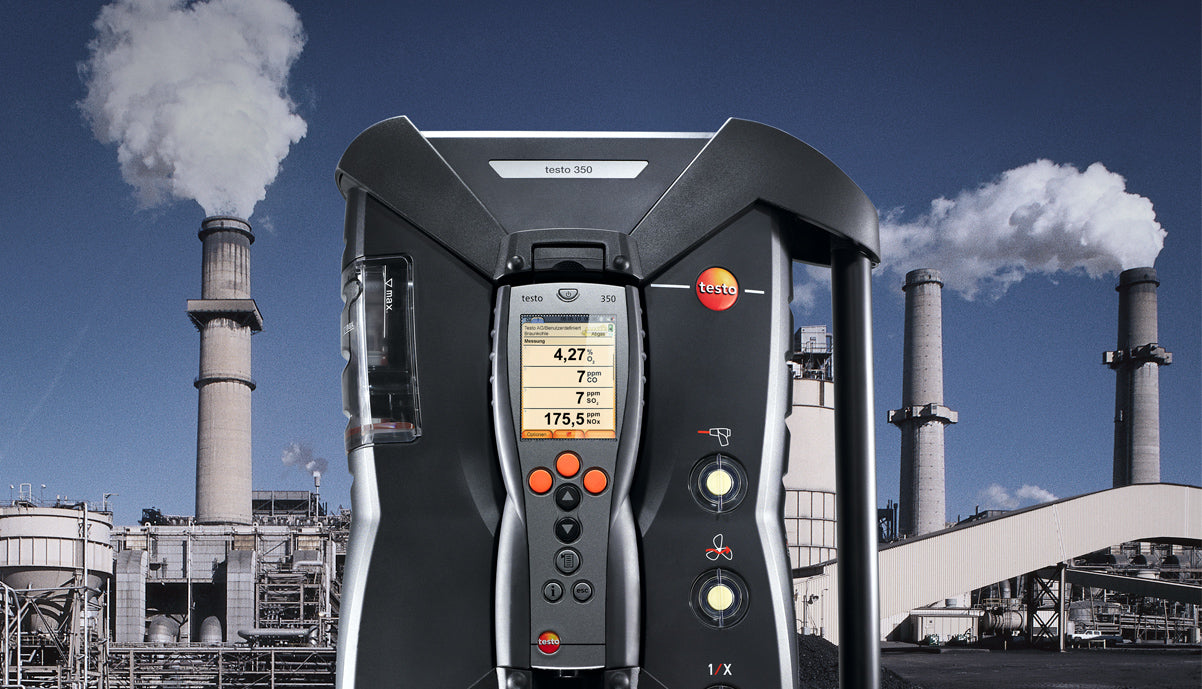
Nitrogen oxide (NOx) may just sound like one of the many chemical compounds found in the air, but the implications of how exactly it is created and the potential health effects of the gas are crucial to understand in the industrial and chemical sectors of the market. In order to understand the importance of NOx gas, we first need to discuss its chemical composition to shed light on its formation process, its impacts and how to control NOx gas exhaust.
The formation of NOx Explained.
NOx gas is a chemical compound formed from nitrogen and oxygen. NOx forms when nitrogen and oxygen react with each other during the combustion process. Nitrogen and oxygen do not react at room temperature, rather requiring higher temperatures for the formation to occur. The most common formation of NOx is when fossil fuel is combusted, especially oil, diesel and gas.
NOx is a common designation of nitrogen oxides NO and NO2. Nitrogen oxide (NO) is a colourless gas with a very distinctive smell whilst nitrogen dioxide (NO2) is brown in colour with a similar, sharp smell.
NOx gas is produced in any combustion process where nitrogen is present. This is usually from car engines, and the emission of NOx can be dangerous at high volumes. Next, we will focus on the effects NOx gas created from diesel engines has on New Zealand’s air quality.
Impacts of NOx
The environmental impact of NOx gas plays a negative role on air quality and can be extremely hazardous. Environmental air quality is one of the most important factors affecting public health. It is well recognised that a city’s air pollution is a major contributor to health problems, even if there is only short term exposure.
Why are NOx Gasses Dangerous to Your Health?
A NOx emission is a greenhouse gas in all three forms - N2O, NO2 and NO. All three of these are produced by the combustion process. NO2 is a major component of pharmaceutical smog that is a large contributor to air pollution and can be severely dangerous to human health. A recent study showed that air pollution accounts for about 200 premature deaths a year in Auckland alone. The side effects of NOx as a pollutant include stroke, heart-disease and asthma. In the time where respiratory health is more important than ever, air pollution can pose an even greater threat to public health.
How does NOx Gas Impact the Environment?
Human health effects aside, the planet is also negatively impacted by NOx emissions. As a greenhouse gas, NOx gets trapped in the atmosphere and contributes to the “greenhouse effect” which causes the earth to warm quickly. NOx gas depletes the ozone layer, which protects the earth from harmful radiation from the sun.
Industries that Contribute to NOx Emissions
While private individuals’ transportation does contribute to NOx air pollution, they are a small drop in the bucket when compared to corporation and industrial processes. There are a variety of sectors that contribute heavily to NOx emissions, some of these include:
- Electricity
- Transport
- Stationary energy
- Agriculture
- Fugitive emissions
- Industrial processes
- Waste and land use
- Forestry
- Chemical Industry (the production of nitric acid)
If you are a leader in any of these industries, you should be aware of your company's contribution to NOx emissions. Much of the machinery used in the industrial sector relies on diesel fuel, which is one of the major creators of NOx pollution. As a result, the future is likely to bring governmental policies that control these effects and having the right measuring equipment can help you prepare for these legislative changes.
Efficient Ways of Measuring NOx
Measuring exhaust gas is a requirement. These tests are conducted by a range of different government agencies. Having the right tools to protect your workers and to measure different emissions, including NOx, is crucial. Exhaust gas analysis for diesel and petrol engines is required for transportation and industrial machinery. The emission results will be used to inform managers and leaders if they need to invest in repairing or more efficient equipment.
Nearly every industry uses gas analysers of some shape or form as fossil fuels are used in their combustion process. The first step in reducing emissions is proper monitoring of different emissions, especially NOx. Most analysers use infrared, chemiluminescence and electrochemical components to measure gas emissions.
Reducing NOx emissions can either be a requirement after receiving a poor emissions report, or could be a preemptive solution to the developing legislation. There are several different ways to reduce gas emissions, these include:
- Lower peak temperatures
- Spend less at peak temperatures
- Reduce overall nitrogen
While burning fossil fuels may be an unavoidable process in most industrial applications, it still pays to be more conscious of NOx emissions and focus on reducing your carbon footprint. In order to achieve this, you require top-of-the-line measuring solutions.
Choose a Testo Exhaust Gas Analysis System
Testo Exhaust analyser systems combine intuitive interfaces with complex and intricate technologies that produce reliable results. For example, the Testo 350 X is a tool that is used for industrial emission measurement on industrial engines, burners, gas turbines and in thermal processes. This includes NOx gas.
Testo 350 XL is easy to operate and was created to complete precise industrial emission measurements and provide proper data administration. This makes it an ideal solution for staying on top of emissions.
Testo products always use the most comprehensive and effective technology in our measurement equipment. This gives you the edge you need to stay on top of your emissions. For more information about our range of gas analysers, get in contact with the team at Testo NZ today!

